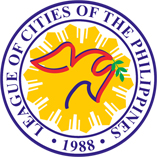Liveable cities
There’s a new trend starting, triggered off by the last elections. It’s about the rise of New, Young Mayors across the country. Out of 145 cities across the country, 70 of them have new, first-term Mayors. And I just learned that out of the approximately 1,500 municipalities in the country, 600 also have new Mayors. I’m sure a number of them were actually Mayors in the past who sat out a term or two and were returning to their old posts. Some may also come from political dynasties, and thus are not really “new” to the position. Nonetheless, this presents an opportunity for a fresh start for cities and municipalities; an opportunity to re-imagine and re-define themselves as more liveable cities. For the most part, these new Mayors are young and represent a new generation of local executives who have a chance to re-shape the cities and municipalities they will lead.
Now just three weeks into their new jobs, it’s clear that some Mayors are on a mission and have hit the ground running. None have received more public attention and media coverage than Manila Mayor Isko Moreno. He’s cleared roads, cleaned public spaces, started demolishing illegally-built public buildings, initiated a drive against crime and illegal gambling, and started the long process of rehabilitating Manila. He’s also announced to plans to improve heritage and historical sites and to link them up for a better tourist experience. In so doing, he has captured the public imagination and drawn attention to how a Mayor with a vision can transform a city or municipality.
At the Liveable Cities Challenge project, it is our hope that Mayors will grab the opportunity to transform their cities into sustainable, resilient, competitive cities. Cities, of course, face a multitude of challenges, issues, and problems from congestion, to crime, pollution, poor public services, and others. However, they also represent opportunity to create greater productivity, creativity, and economic growth. Many people look at high population and high population density as problems. However, when well-managed, that high population and density can bring with it certain advantages and efficiencies in terms of energy use, water utilization, mass transit management, and overall connectivity. Greater economic productivity and creative combustion and collaboration are also the products of well-managed cities.
For the Philippines, we’ve traditionally only focused our attention on three large metropolitan areas – Manila, Cebu, and Davao. But because of our archipelagic structure and large population, we should probably be thinking of how we can develop closer to 40 medium-sized cities, each with a capacity to be the main engine or economic driver for its own region or island group. To distribute growth more evenly across the country, we should also look to develop these cities from north to south rather than to cluster them too tightly in large metropolitan areas like the National Capital Region, which has 16 cities and one municipality all bundled into Metro Manila.
The Liveable Cities Challenge hopes to address these issues through an urban planning competition among cities. The challenge will be designed to enable cities to innovate and look for new solutions to age-old problems in the areas of Mobility, Resilience, eGov or GovTech, and Basic Services. The challenge is also designed to introduce as much public-private collaboration in the search for solutions. This will not only involve design but will necessarily have to address challenges in procurement, financing, and implementation of projects. Ultimately, this may even lead to new “business models” on how city projects are designed, funded, built, and managed so they become more responsive to the needs of a city.
If we take a look around the world, this has long been a trend in how good cities have been managed. We only have to realize that the collective of sustainable, resilient, competitive, liveable cities will make the country a more competitive one. It’s good to see so many new, young Mayors take office to give their cities a fresh start.
Guillermo M. Luz (luz.gm@ayala.com.ph) is Chief Resilience Officer of Philippine Disaster Resilience Foundation and heads the Liveable Cities Challenge project.











